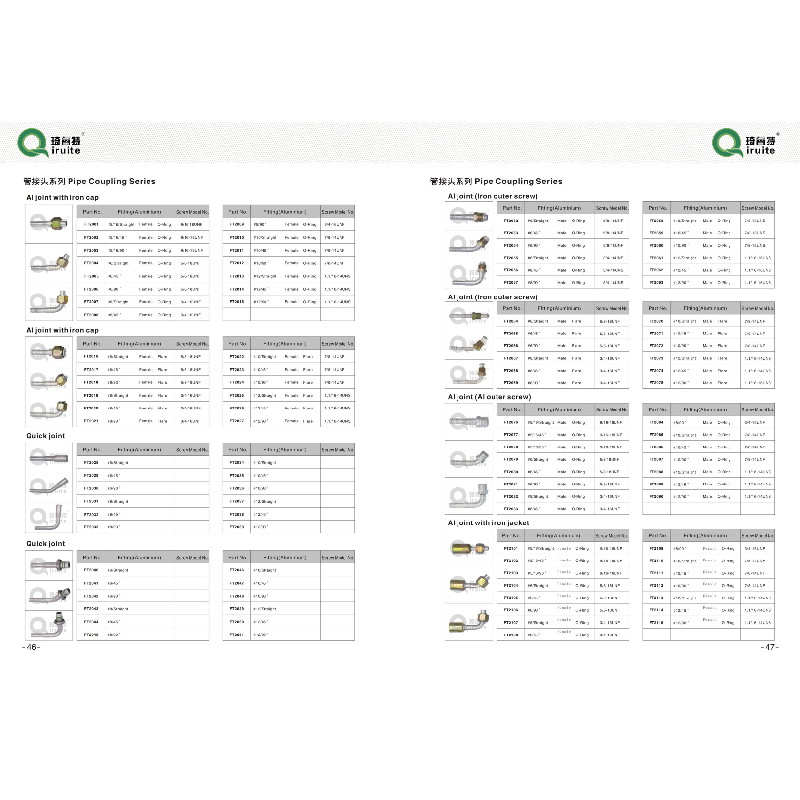power steering hose leak fix
Fixing Power Steering Hose Leaks A Comprehensive Guide
Power steering systems are vital components of modern vehicles, providing smooth and effortless steering capabilities. However, like any other automotive system, they can develop issues over time, with hose leaks being one of the most common problems. A leaking power steering hose can lead to reduced steering performance, increased wear on the system, and potential damage to other components. Fortunately, fixing a power steering hose leak is often a manageable task for DIY enthusiasts. In this article, we'll explore the common causes of power steering hose leaks, the signs to watch for, and a step-by-step guide to fixing the problem.
Common Causes of Power Steering Hose Leaks
Power steering hoses, typically made of rubber and reinforced with metal, can deteriorate due to several factors
1. Wear and Tear Over time, the material can weaken from exposure to heat, moisture, and other environmental conditions, leading to cracks and leaks. 2. Corrosion Metal fittings can rust or corrode, especially in regions with harsh climates, compromising the integrity of the hose connections. 3. Improper Installation Hoses that are kinked or improperly routed can wear prematurely against surrounding components, leading to leaks. 4. Excessive Pressure If the power steering pump is malfunctioning, it may create excess pressure that the hoses are not designed to handle, causing them to burst.
Signs of a Power Steering Hose Leak
Identifying a leak early can save you from more extensive repairs down the line. Look for these signs
- Puddle Under the Vehicle A bright red or clear fluid beneath your vehicle, especially near the wheels, is often a sign of power steering fluid leakage. - Steering Difficulty If you notice increased resistance when turning the steering wheel, it could indicate low fluid levels due to a leak. - Squealing Noise A loud squealing or whining noise when steering can signal inadequate fluid levels. - Fluid Warning Light Some vehicles have a dashboard warning light that indicates low power steering fluid.
Step-by-Step Guide to Fixing a Power Steering Hose Leak
Once you've confirmed a power steering hose leak, follow these steps to fix it
Step 1 Gather Your Tools and Materials
You’ll need - Replacement power steering hose (specific to your vehicle’s make and model) - Wrenches and sockets - Pliers - Screwdriver - Fluid catch pan - Power steering fluid - Safety gloves and goggles
Step 2 Safety First
power steering hose leak fix

Before starting any repairs, ensure your vehicle is parked on a flat surface, and the engine is turned off. Allow the engine to cool down, then disconnect the negative battery terminal to prevent accidental starts.
Step 3 Locate the Leak
Using a flashlight, inspect the power steering hoses and fittings for signs of leaks or damage. It’s crucial to identify whether the entire hose needs replacement or if a simple tightening of a fitting can solve the problem.
Step 4 Remove the Damaged Hose
If the hose is clearly damaged, place a fluid catch pan under the area and carefully detach the hose using the appropriate wrenches. Take note of how the hose is routed to ensure correct installation of the new one.
Step 5 Install the New Hose
Attach the new power steering hose, ensuring it is correctly routed and properly secured to avoid kinking or rubbing against other components. Tighten the fittings securely but be mindful not to overtighten, which can create new problems.
Step 6 Refill the Power Steering Fluid
Once the new hose is installed, refill the power steering reservoir with the appropriate fluid as specified in your vehicle's owner manual. Be cautious not to overfill.
Step 7 Test the System
Before reconnecting the battery, turn the steering wheel back and forth to help circulate the fluid and expel air from the system. Check for any leaks at the new hose connection. Once you’re satisfied, reconnect the battery and start the engine to further test the steering function.
Conclusion
A leaking power steering hose can be a nuisance, but with the right tools and a little know-how, it’s a repair that most vehicle owners can tackle. Regular inspections of your power steering system can help catch leaks early, ensuring your vehicle remains safe and easy to drive. If you're ever in doubt or uncomfortable handling such repairs, consulting a professional mechanic is always a wise choice for maintaining your vehicle's performance.
-
Ultimate Spiral Protection for Hoses & CablesNewsJun.26,2025
-
The Ultimate Quick-Connect Solutions for Every NeedNewsJun.26,2025
-
SAE J1401 Brake Hose: Reliable Choice for Safe BrakingNewsJun.26,2025
-
Reliable J2064 A/C Hoses for Real-World Cooling NeedsNewsJun.26,2025
-
Heavy-Duty Sewer Jetting Hoses Built to LastNewsJun.26,2025
-
Fix Power Steering Tube Leaks Fast – Durable & Affordable SolutionNewsJun.26,2025

